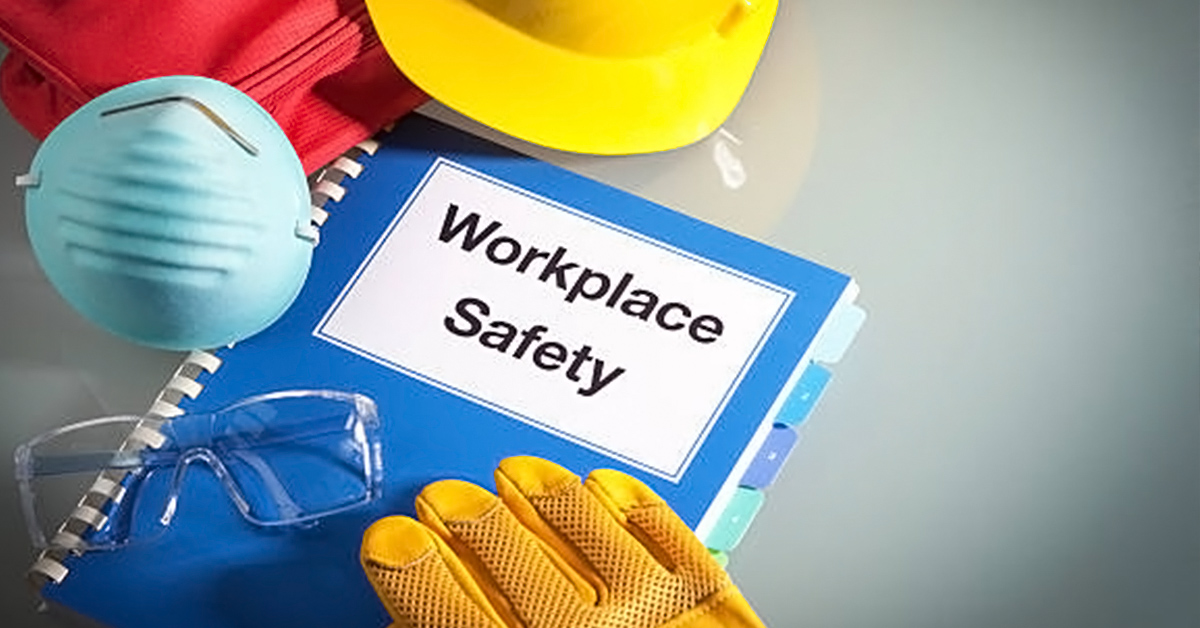Employees and workers are critical to the success of a company. Hence, they should be able to work in a safe environment without having to worry about accidents. Most companies will have a safety officer on-board who is mainly in-charge of making sure that all employees are safe and safety measures are being implemented for workplace safety.
While companies are required to have at least one safety officer in their company, there are companies that do not have this position but rather, require their employees to attend safety trainings. But what is the significance of a safety officer and safety trainings to companies?
In this article, we’ll be looking at the reasons why having safety trainings and having a safety officer is important to companies.
What is a Safety Officer?
A Safety Officer is responsible for the planning, implementation, and management of the company’s employee safety at the work place. They mainly ensure that the company is able to adhere to Occupational Health and Safety Guidelines.

Having a safety officer for both private and government companies is essential and mandated by Republic Act 11058 or the Occupational Safety and Health Standards Act. An individual can only become a Safety Officer if they have completed training under a DOLE-Accredited Training Organization.
Safety Officers can be categorized in four levels and they are as follows:
- Safety Officer 1 (SO1) – An employee who has completed the mandatory eight hour orientation course prescribed in the OSH standards and two-hour trainers’ training.
- Safety Officer 2 (SO2) – An employee who has completed the mandatory 40-hour OSH traininer course that is applicable to the industry and prescribed by OSH standards.
- Safety Officer 3 (SO3) – An employee who has completed the mandatory 40-hour training course applicable to their industry with an additional 48 hours of advanced/specialized occupational safety training course, has relevant experience in OSH for at least two years, and meet other requirements prescribed in OSH standards.
- Safety Officer 4 (SO4) – An employee who has accomplished the mandatory 40-hour OSH training with an additional 80 hours of advanced/specicialized occupational safety training course, an aggregate of 320 hours of OSH-related training or experience, actual experience as SO3 for at least four years, and meet other requirements prescribed by OSH standards. Additional training can be converted to years of experience where as 80 hours of training can equate to one year of experience and vice versa.
It’s also worth taking note that individuals who reach SO3 can be eligible for certification as OSH practitioner while those who reach SO4 are eligible for certification as OSH Consultant.
A private company or a construction company should at least have Safety Officers that are at Level 2 and above.
Why is a Safety Officer Essential to a Company?
As mentioned, Safety Officers are primarily in-charge of workplace safety. They are able to identify possible safety risks and hazards in the workplce. Safety Officers ensure that the workplace environment is as safe as possible for all workers. They can create plans to minimize risks and they are able to inform the management of any hazards that may take place in the site or office.
BOSH and COSH: Understanding the Two Types of Occupational Safety and Health Trainings
In the Philippines, there are two types of safety trainings that an employee or safety officer can attend. The type of training that you will attend should reflect in the industry that you are in.
The Construction Safety and Health Seminar (COSH) is directed towards those in the construction industry. It is a training program that aims to equip participants with the basic knowledge and skills in administering safety audits, assessments, and the analysis of hazards as well as the risks in the construction industry.

The Basic Occupational Safety and Health (BOSH), on the other hand, is an eight-hour orientation plus two-hour training that’s designed to supply participants with knowledge and basic concepts and principles of occupational safety and health. It also helps potential safety officers to implement their company’s safety and health programs. The BOSH training program is geared towards general industries which include offices, schools, and other industries that are not related to construction.

Why is Safety Training Important?
Without safety training, there won’t be any safety officers. In the absence of a safety officer, employees need to be able to understand and identify the health and safety hazards in their workplace.
Safety training is crucial for workers and safety officers alike as it will also help them to have a solid knowledge of the safety topics associated with their jobs. This will also help employees understand the approved practices and safety expectations in their workplace.
That said, here are three (3) reasons as to why safety training is important for your company.
Compliance
Safety and Health training is mandated by law for all employees – not just safety officers. The Occupational Safety and Health Standards Act (RA 11058) reminds all companies that having a safety officer who can supply the company with adequate safety training is a government mandate. Hence, it is a requirement for all companies to follow – regardless of the industry. Most companies will be set with one safety officer but it would be wise to check with guidelines as these can change depending on the size of the company and the industry that it is in.
Promotes and Improves Workplace Communication
Safety trainings help to encourage employees to respond efficiently and swiftly to address any safety or health hazards. Employees should be informed of the communication process in case of a health issue as a part of their training which will, in turn, increase workplace communication.

That said, safety officers should be able to establish clear guidelines and a communication strategy that outlines who needs to be alerted, how they are to be alerted, and a substitute in case the said person is unavailable.
Reduces Costs in the Long Run
A good health and safety training helps to reduce costs in various ways. Apart from keeping the company from breaching any health and safety regulations, having a good safety training program also helps to keep workers in tact because they can avoid workplace injuries or illnesses that can cause a dent in operations. Further, it also helps in productivity as safety training can help to make processes and operations much clearer.
Ultimately, having safety training for employees and having a dedicated safety officer helps the company to become more proactive. Not only will employees be more aware of their surroundings but they’ll also be able to communicate more efficiently with each other. Further, safety training also reduces the risk of having to lose employees and equipment because of unpreparedness – familiarizing yourself with certain processes helps to avoid workplace accidents from happening and maintains a healthy office environment for all parties involved.
Sources:
- DOLE safety training in workplaces now free. (2021, January 31). Philippine News Agency. https://www.pna.gov.ph/articles/1129125
- Construction Industry Authority of the Philippines. (n.d.). Ciap.dti.gov.ph. https://ciap.dti.gov.ph/
- Mitchell, D. (2013, January 10). Why Is a Safety Officer So Important In the Workplace? | Envico®. Healthandsafetycourse.co.uk. https://healthandsafetycourse.co.uk/blog/why-is-a-safety-officer-so-important-in-the-workplace/
- Occupational Safety and Health Center | Ligtas and Maingat. (n.d.). https://oshc.dole.gov.ph/
- Charlton, B. (2021, October 4). What Is the Role of a Safety Officer in the Workplace? American Society of Safety Professionals. https://www.assp.org/news-and-articles/what-is-the-role-of-a-safety-officer-in-the-workplace#:~:text=%E2%80%9C%5BA%20safety%20officer%20will%5D
- What is Workplace Safety Training and why is it important? (n.d.). Www.kirialign.com. https://www.kirialign.com/blogs/what-is-workplace-safety-training-and-why-is-it-important
- Workplace Safety – Importance of Training – Tutorialspoint. (n.d.). Www.tutorialspoint.com. https://www.tutorialspoint.com/workplace_safety/workplace_safety_importance_of_training.htm
- Global, P. T. (2021, December 10). Training Consultancy & Coaching Services, Public Training Seminar Services. Www.promisetrainingglobal.com. https://www.promisetrainingglobal.com/why-is-safety-training-important-what-are-the-benefits-of-safety-training-courses/
- Cobden, S. (2019, February 27). 7 reasons why health and safety training is important. EssentialSkillz. https://www.essentialskillz.com/health-and-safety-online-training/resources/why-health-and-safety-training-is-important










